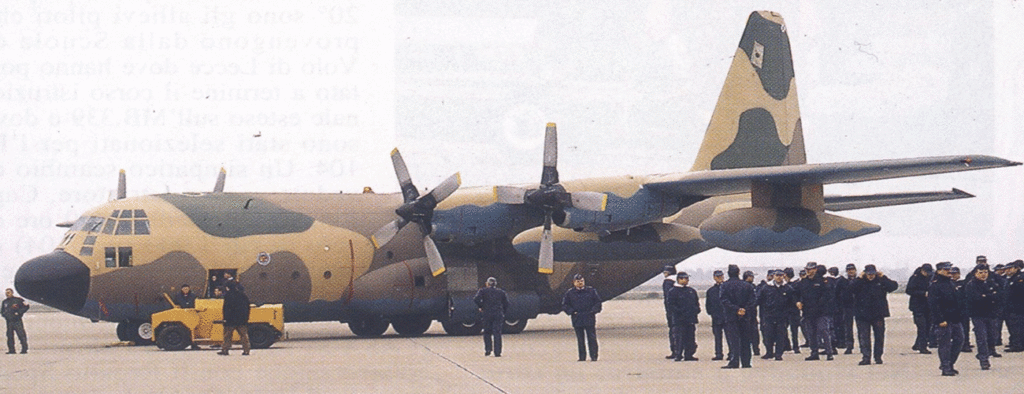Allied Force Italian Wings on Kosovo
PREMIUM OF THE CONFLICT
by Gigi Iacomino
In the years of Marshal Tito’s presidency, although it was formally a province of the Federal Republic of Serbia and Montenegro, the Kosovo region had been able to enjoy the status of an autonomous province of Serbia. The situation changed radically in the late 1980s and early 1990s when, following the introduction of the new Serbian constitution (1990), which drastically reduced its autonomy, Kosovo was subjected to greater control by of the Belgrade government. In response to the attitude of the Serbian government the Kosovars promoted, in September 1991, a secret referendum whose outcome was, with an overwhelming majority, favorable to the independence of the region; in May of the following year the elections for the formation of a new government were announced, which led to the election of Ibrahim Rugova as President of Kosovo.
In the following years the Albanian-Kosovar institutions multiplied – in parallel with those Serbian officials – while, on the other hand, the violations of human rights against the Kosovar Albanians by the Serbs also increased, with their behavior, they went to increase the difficult situation of the republics of the former Yugoslavia, especially in Serbia and Kosovo, now torn by ethnic conflicts.
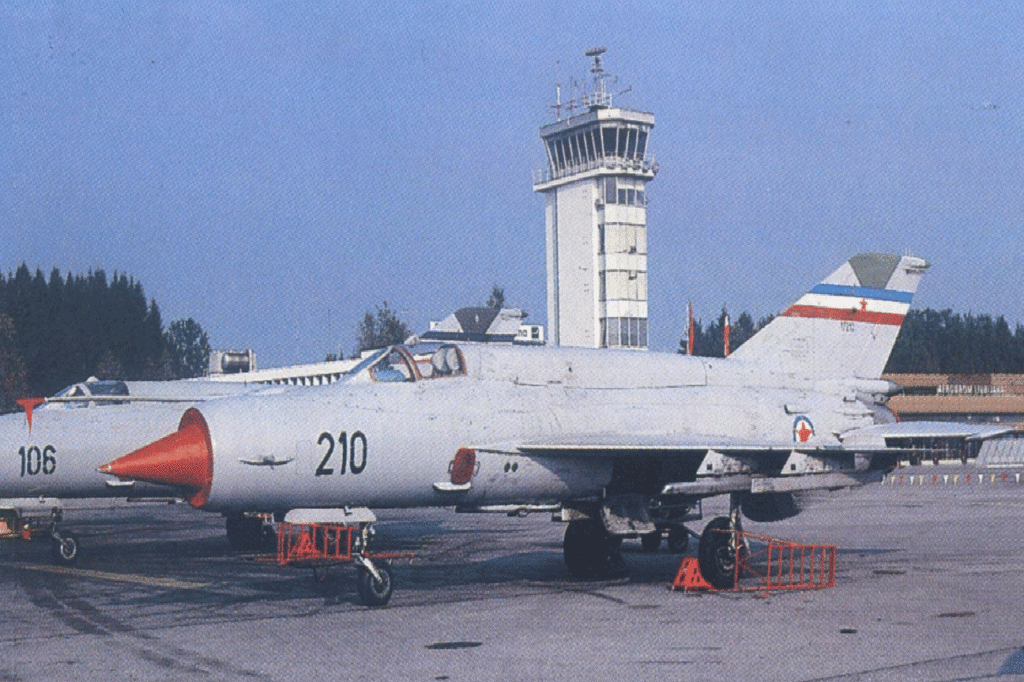
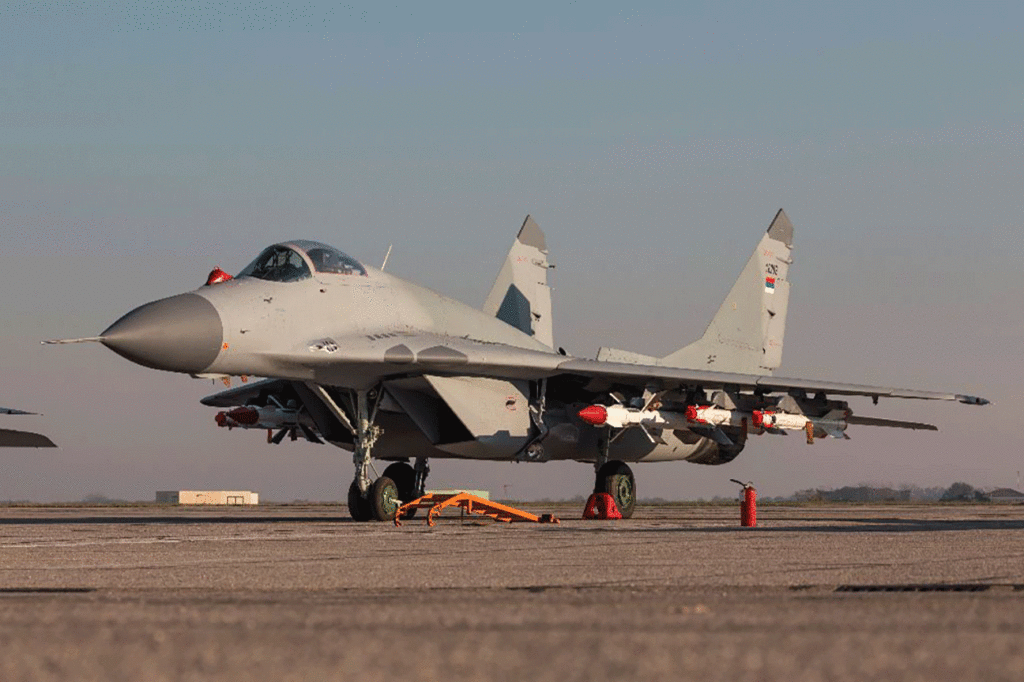

Mig 21 MF of the Serbian Aviation
Mig.29 Fulcrum of the Serbian Aviation
Orao of the Serbian Aviation
In 1995, following the Dayton (United States) peace accords of November 21 of the same year, the Federal Republic of Serbia and Montenegro was established comprising again the region of Kosovo which saw, once again, vanish its aspiration to the independence.Despite Milosevic’s assurances, the Serbs continued their repressive policy; vainly the UN, the European Union and NATO, tried to put pressure on the Belgrade government to try to stem the violence, but it seemed that any kind of mediation was destined to fall on deaf ears. To try to stem the disastrous situation, and trying to enforce UN resolutions, NATO started the Joint Endavour Operation, which was followed by the Deliberate Guard and the Determined Force, which they saw at the airports made available by the Italian Air Force their main operational bases.
In the spring of 1998 the series of violent clashes between the paramilitary forces of Belgrade, which forced over 250,000 Kosovars to leave their homes to escape Serbian repression, and led to the birth of the group known as the Kosovo Liberation Army (KLA), yes he became more and more intense, until the whole province fell into a real war.
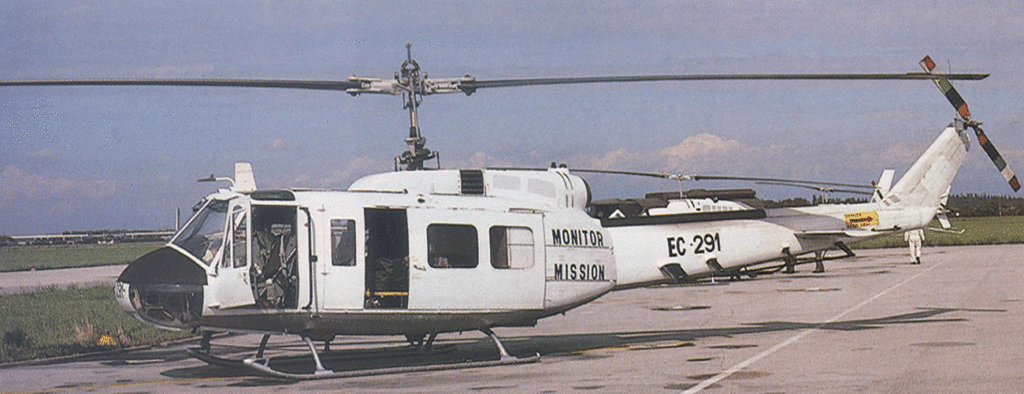
The AB205A of the Army Light Aviation, shot down on 7 January 1992 by the Mig 21 of the Serbian Aviation. ( Delta Editrice )
The diplomatic intervention of the American negotiator in the Balkans, Dick Holbrooke, in October 1998, paved the way for the deployment of ceasefire control teams within the Kosovo peace mission (Kosovo Verification Mission, KVM), protected by the NATO Extraction Force, based in neighboring Macedonia.This mixed force of the size of a battalion, composed of British, French, Italian, German and Dutch, was supported by an air force that included Dutch Boeing CH47D Chinook helicopters, Augusta A.129 and Italian AB.212, and Aérospatiale SA.330 French Puma and Gazelle.
Despite the presence of this international contingent the ceasefire was never observed; the difficult situation and the constant and brutal violations of the most basic human rights forced, on September 23 of the same year, the United Nations Security Council to adopt Resolution No. 1.199, with which it expressed alarm about the “humanitarian catastrophe” of the Kosovo. Despite attempts at mediation and appeals to peace launched by the international community and the various resolutions adopted by the UN, at the beginning of 1999 the growing number of riots in the region led the Serbian government to apply a further repressive crackdown, followed by sending a military contingent consisting of over 40,000 soldiers and 300 armored vehicles. Against the Serbian military intervention, NATO, on a mandate from the UN, started a retaliatory campaign that was characterized by being the only war in history fought exclusively by air.
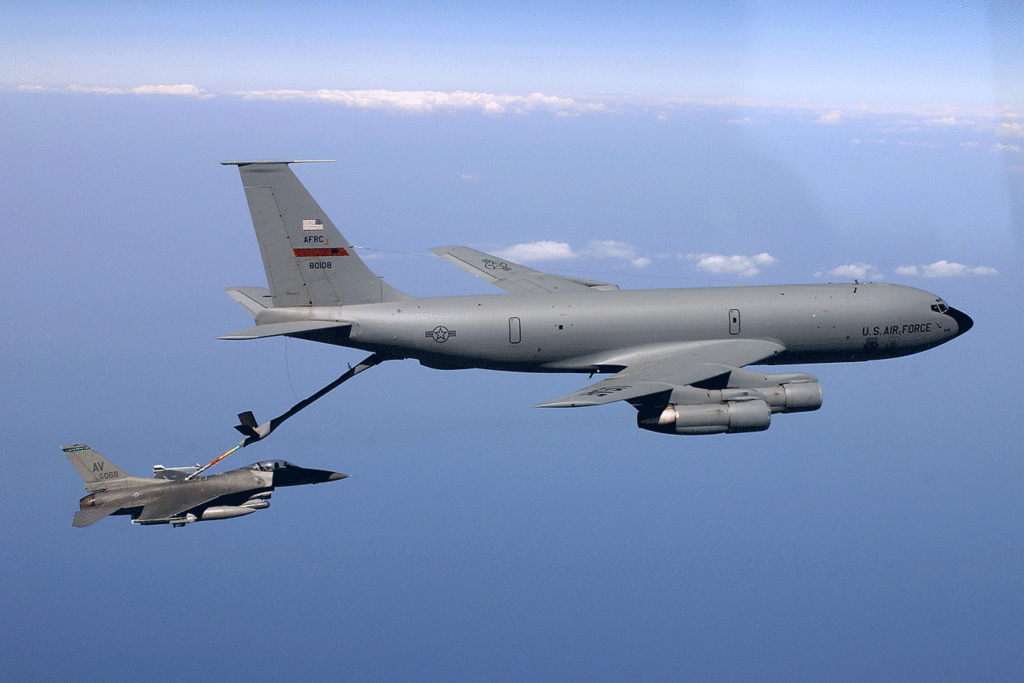
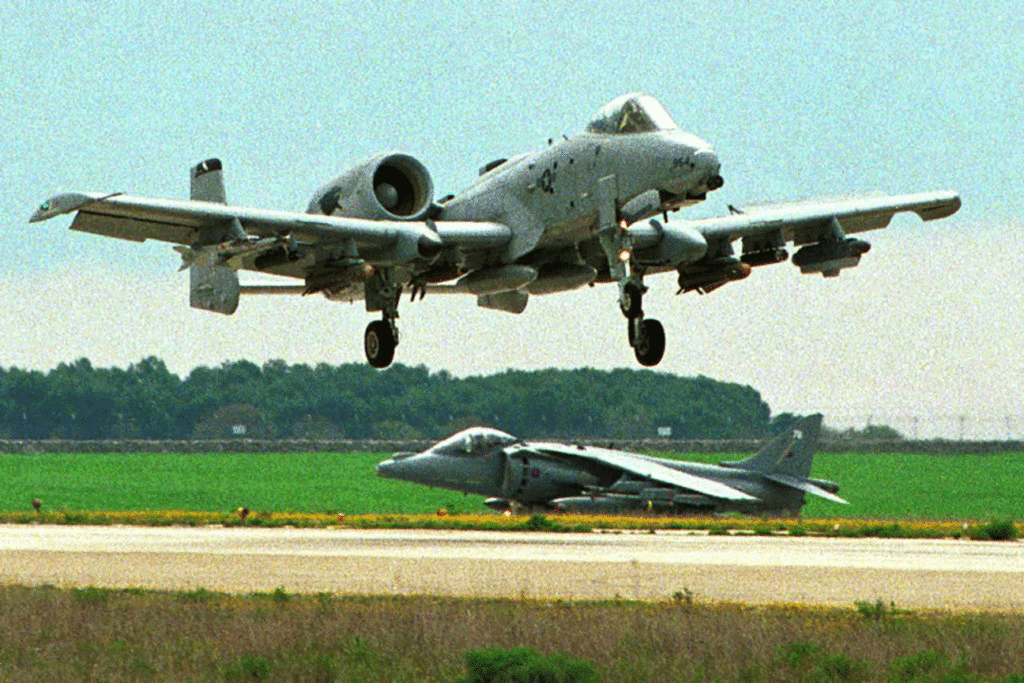
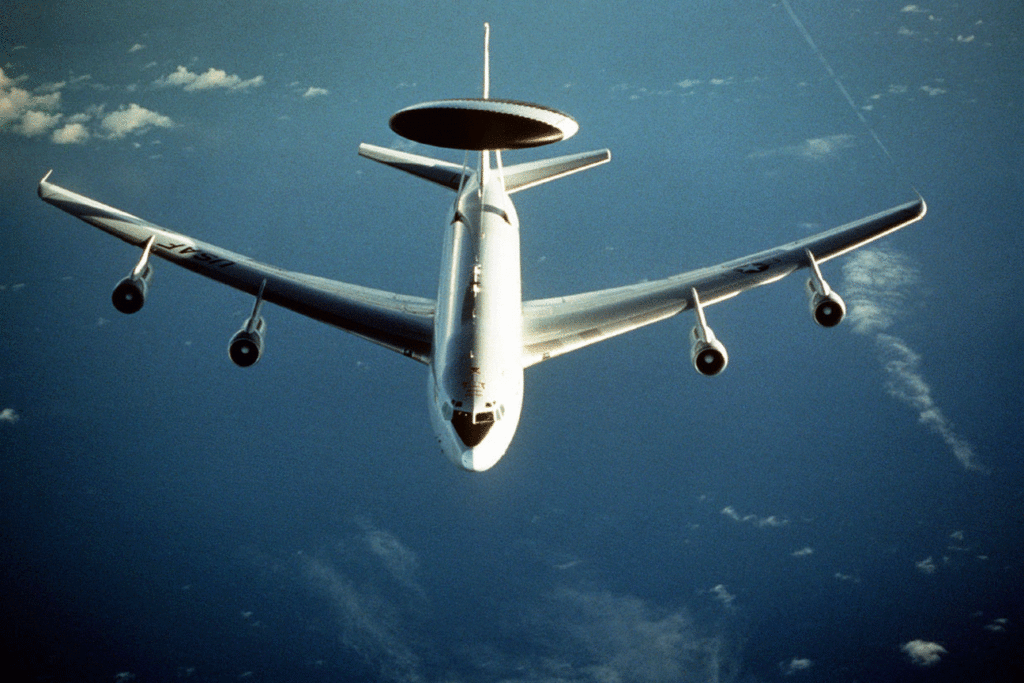
A F16C USAF fighter-bomber, based in Aviano, while being refueled in flight by a Boeing KC 135 tanker (USAF)
An A10A from the USAF photographed on the Gioia del Colle airbase. In the background is visible a RAF Harrier GR7. (Ron Eisele)
A Boeing E-3A Sentry from the USAF on a patrol flight over the Adriatic. (USAF)
KOSOVO 1999
The military and civilian contingents of Belgium, Canada, Denmark, France, Germany, Greece, Iceland, Italy, Luxembourg, Norway, Netherlands, Poland, Portugal, United Kingdom, Czech Republic, Spain, United States took part in the Determined Force Operation. , Turkey and Hungary, which put together 31 naval units and 551 split aircraft, including fighter-bombers, transport and reconnaissance aircraft, and helicopters.
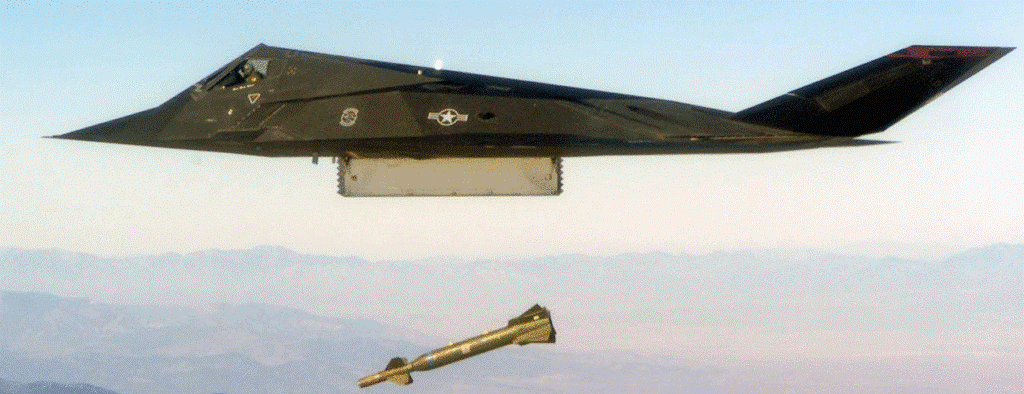
A F117A Nighthawk from the USAF. (USAF)
By contrast the Serbs and their allies in the area of Kosovo and neighboring territories 154,000 men; 1,396 tanks; 825 armored combat vehicles; 1,400 pieces of artillery, 1,850 anti-aircraft positions; 100 anti-aircraft missiles, 48 combat helicopters; 240 between fighters and fighter-bombers. Following the failure of the Rambouillet summit, held on 20 March 1999 to define the situation in Kosovo, the situation worsened. Meanwhile, the NATO Deliberate Forge Operation on Bosnia continued, but the increase in the forces participating in it in recent months highlighted the determination of the Atlantic Alliance to exploit its powerful deployment to hit Yugoslavia.
The first wave of reinforcements, arrived in February of the same year, consisted of eight strategic Boeing B52 Stratofortess bombers of the USAF armed with cruise missiles, which were redeployed on the basis of the RAF in Fairford (England). A dozen of Lockheed F117A Nighthawk stealth fighter-bombers, along with a Grumman EA-6B Prowler contingent, were flown to Italy at the Aviano air base.
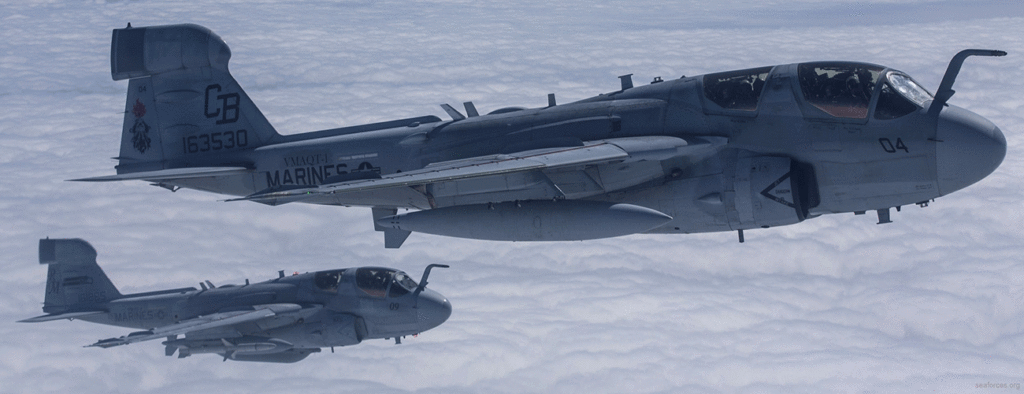
A pair of Grumman EA-6B Prowler Marines electronic warfare aircraft. (Seaforce.org)
The fleet of tanker aircraft already deployed in Europe was reinforced by an additional rate of twenty-nine aircraft (25 Boeing KC135 Stratotankers and four Mc Donnell Douglas KC10A Extenders), which were based on several airports, including the Sigonella aeronaval station in Sicily , the Moron air base, in Spain, and the RAF base of Mildenhall, in the United Kingdom.The fleet of about 250 Allied aircraft, comprising around 200 USAF aircraft, was placed under the operational control of the Combined Air Operation Center, set up at the Vicenza air base “Dal Molin”. The commander of the south-European NATO sector, USAF Lieutenant General Mike Short, organized the concentration of forces from his headquarters in Naples. On the eve of the launch of the attacks, General Short moved to Vicenza to lead the war missions of the Combined Air Operation Centrer, a high-tech center connected via computer and satellite with all the NATO bases involved in the operations, as well, in time almost real, with the key means of surveillance in the Balkans, namely Lockheed U2R Dragon Lady reconnaissance aircraft, Boeing E3A Sentry AWACS radar surveillance aircraft and US reconnaissance satellites.
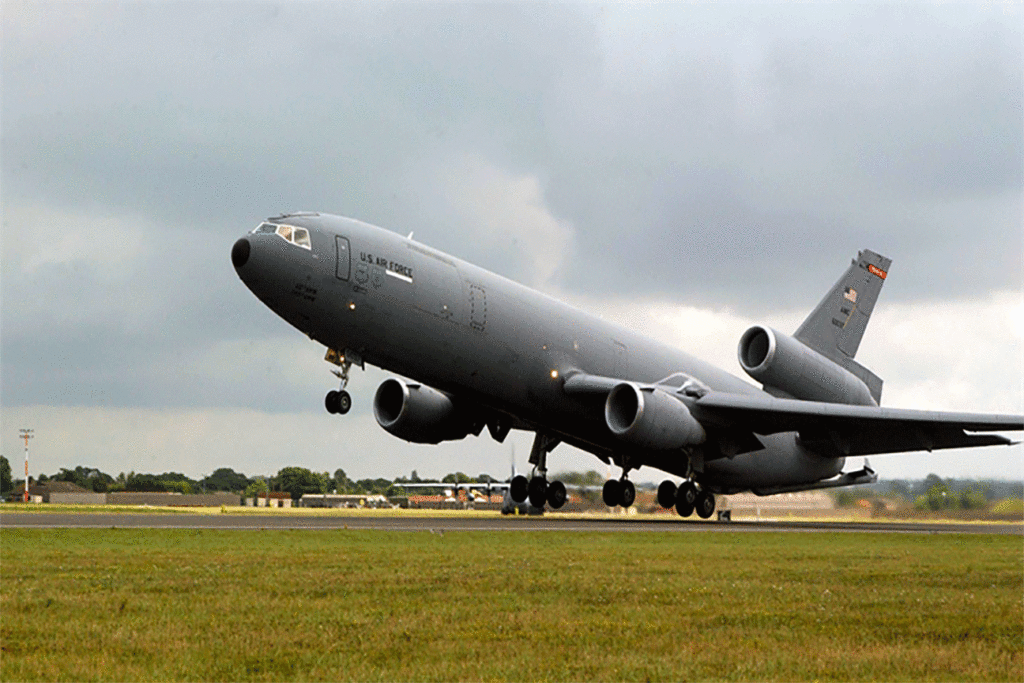
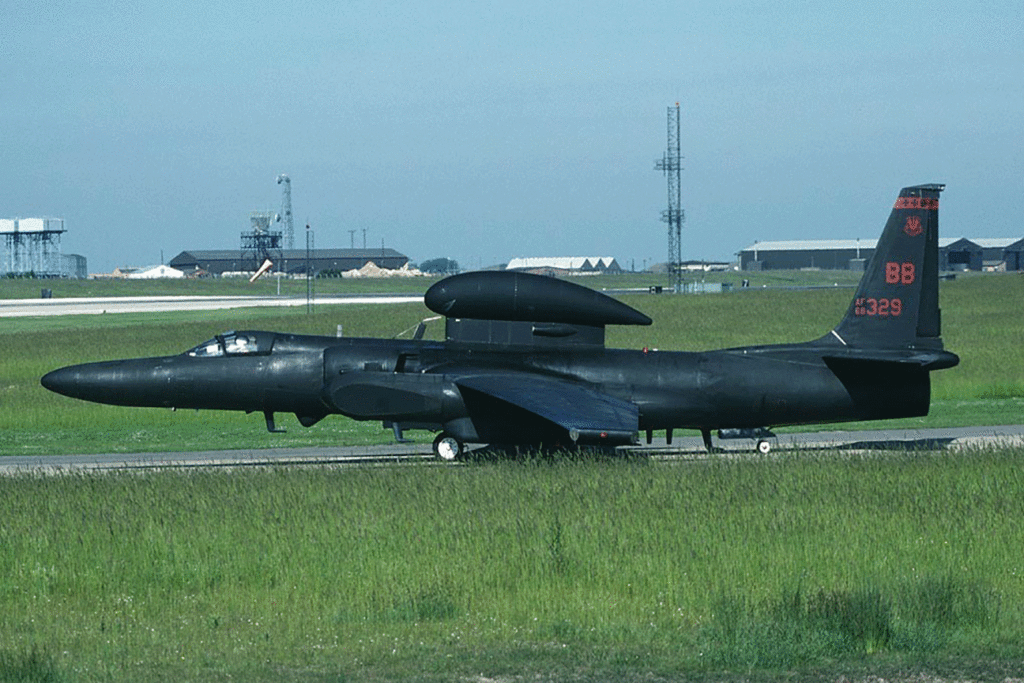
Take-off of a KC10A Extender tanker from the USAF. (USAF)
A Lockheed U2R Dragon Lady strategic reconnaissance aircraft. (USAF)
Take-off of a KC10A Extender tanker from the USAF. (USAF) A Lockheed U2R Dragon Lady strategic reconnaissance aircraft. (USAF) The daily mission orders contained all the operational data, defining the objectives, communication and route necessary for the allied pilots to coordinate their exits. In order to ensure that all planes operated on common radio frequencies and their flight plans were coordinated no Allied aircraft, except for the USAF’s stealth aircraft, flew over the Balkans without being previously included in mission orders. Set up in 1993 to control the no-fly zone over Bosnia, and since then, at the end of 1998, the Combined Air Operation Centrer, on the occasion of the “Eagle Eye” Operation, extended its range of operations to cover Kosovo. During the “Eagle Eye” a close collaboration was developed with KVM observers (operating on land in Kosovo), through the Kosovo Verication Co-ordination Center in Kumonavo, Macedonia. KVCC information cells worked closely with the KVM to identify and locate all Serbian forces in the Kosovo area.
On March 20, 1999, when KVM observers were withdrawn from Kosovo, KVCC analysts were included in the NATO command of Allied Command Europe Rapid Reaction Corps (ARRC), which has just arrived in Macedonia to command western ground troops stationed in the small Balkan country. The third week of March, after the Paris negotiations broke down, NATO policy makers gave authorization to carry out what became known as the “Allied Force” Operation. The intention of the planners was to have a campaign divided into three phases with limited objectives: phase one was to correspond to the disruption of the integrated system of the Yugoslav air defense system; phase two was to wear down the Yugoslav army (VJ) and the paramilitary police units controlled by the Ministry of the Interior, through attacks on logistics facilities, supply routes and then troops in the field. Although crucial, phase two was limited to targets that were below the 44th Parallel, creating what became known as the “Kosovo operation theater”; the final phase of the operation involved extending the campaign to attack the primary objectives of phase two throughout Yugoslavia.
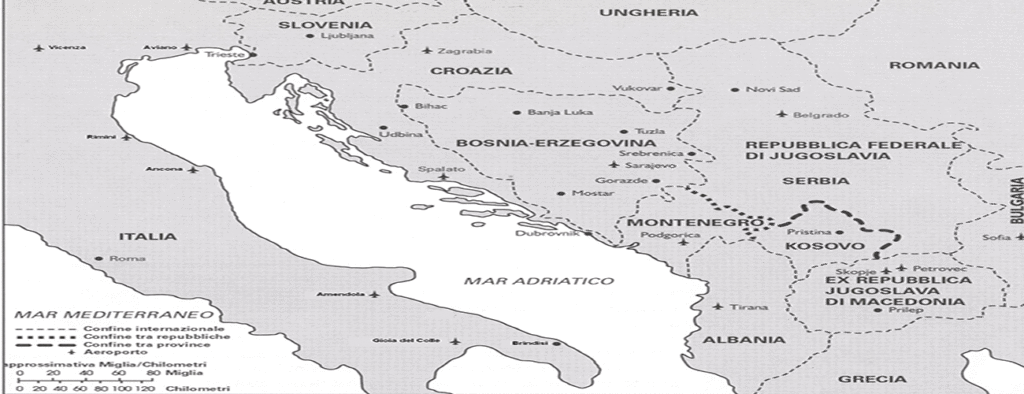
Map of Italian airports mainly affected by the Allied Force operation. (Gigi Iacomino)
The plan called for progressive implementation: NATO’s political and military leaders hoped for the execution of phases two and three only after the Yugoslav air defenses had been hammered for a long time. The leaders of the major NATO member countries, convinced that Milosevich would give up after a few days of bombing, authorized only a list of 50 objectives with the specific request that the loss of life between Yugoslav military and police personnel be kept to a minimum. For example, only empty barracks, communication sites and remote-controlled radars could be attacked. At 8.30 pm on 24 March the launch of a salvage of various types of cruise missiles launched by the B52 of the USAF, by US Navy ships and by a Royal Navy submarine in the Adriatic, started the Operation “Allied Force “.
THE CONTRIBUTION OF THE MILITARY AIR FORCE
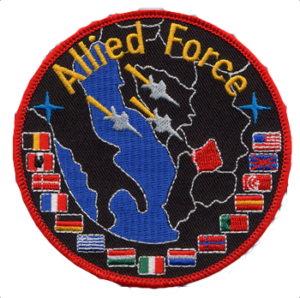
The commitment of the Air Force and of the other aerial components of the Italian Armed Forces in the tormented territories of the former Yugoslavia had begun since the early 1990s. Initially it was a contribution carried out with only transport aircraft and helicopters having the sole function of supporting humanitarian activities in Bosnia. Although carried out under the auspices of the European Community first and then of the United Nations, the missions took place in a growing climate of danger and tension. The demonstration of how dangerous this activity was was provided on 7 January 1992 by the shooting down of an AB205A helicopter of the Italian Army Light Aviation carried out by two Mig 21s, which caused the loss of the five soldiers on board, four Italians and one French;
this incident was followed by that of the following September 3, when a G.222 twin-engine transport aircraft of the 46th Air Brigade was hit and shot down in the final stages of approaching Sarajevo airport, causing the death of four crew members. Despite the painful losses, Italian aircraft continued to support the operations undertaken in the following years by NATO to maintain the ceasefire. Among the aircrafts used by the Air Force departments during the operations, a place of honor belongs to the Panavia Tornado and, to the smaller but not less effective AM-X Ghibli, which had its baptism of fire in the Balkan region.
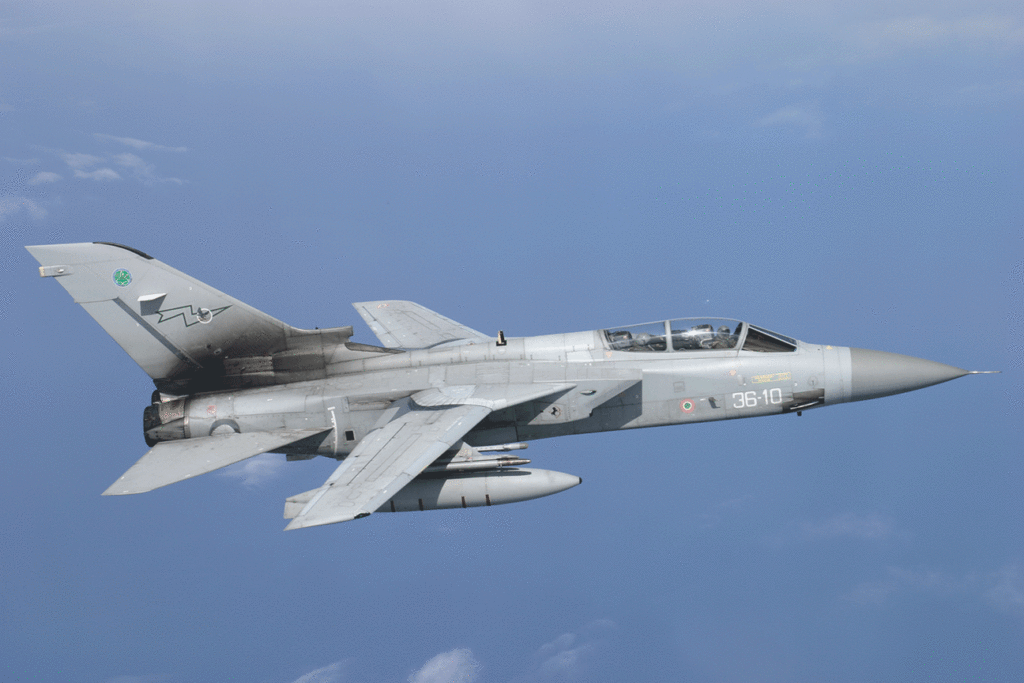
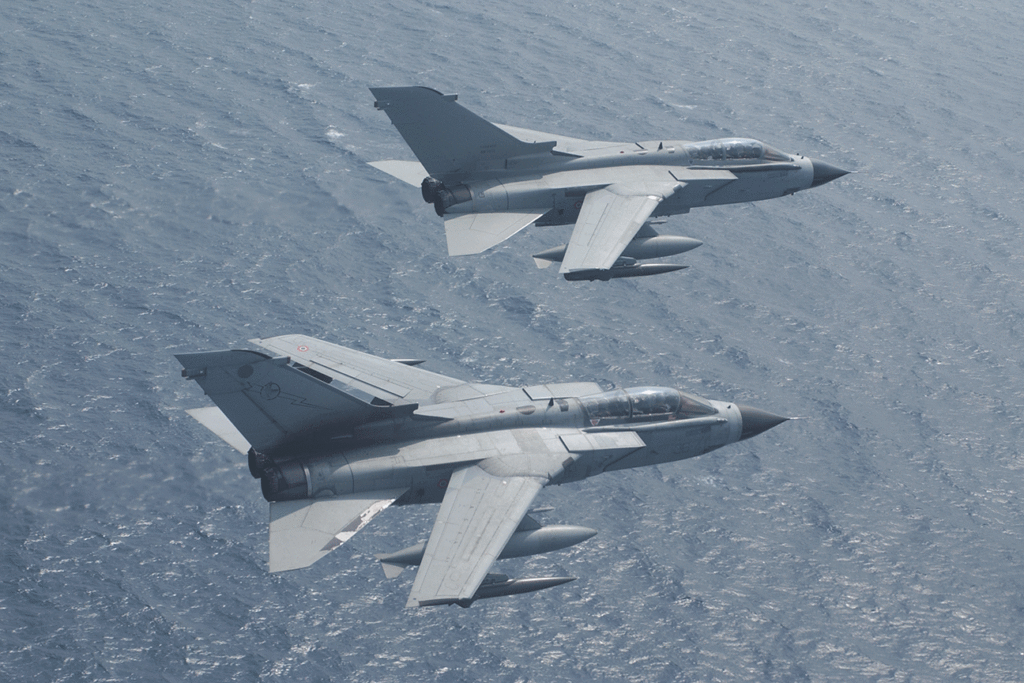
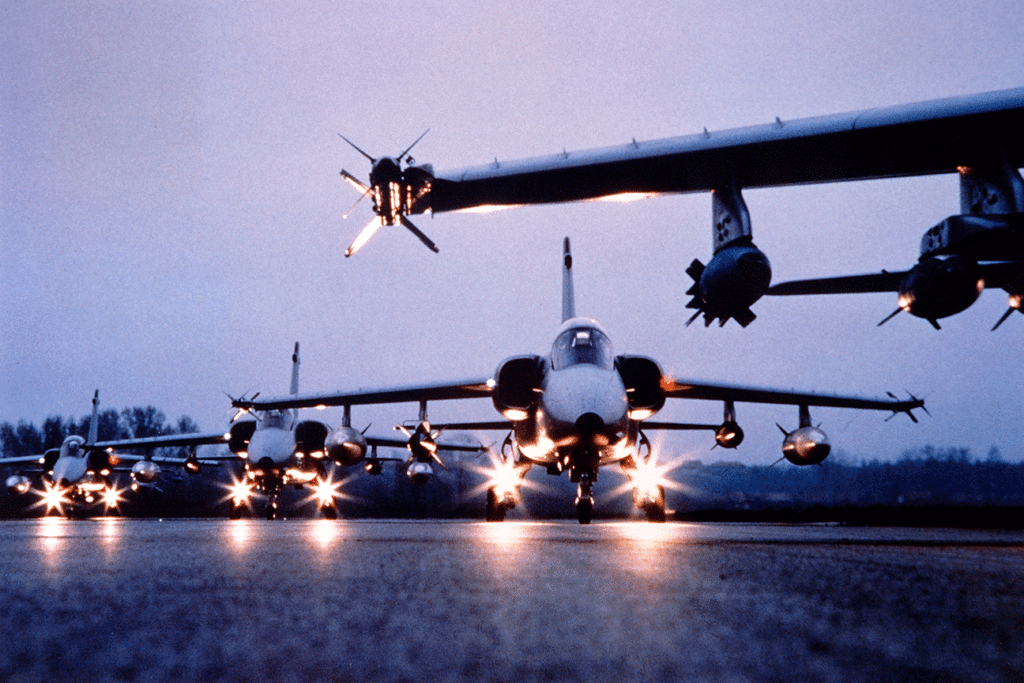
IDS Tornado of the 36th Wing in flight over the Adriatic. (Troupe Azzurra)
A Tornado ADV of the 36th Wing on a patrol flight. (Troupe Azzurra)
AM-X of the 2nd Stormo are preparing to take off for Amendola to participate in the Ghibli operation. (2nd Stormo photo library)
Among the aircraft used by the Air Force departments during the operations, a place of honor belongs to the Tornadoes and, to the smaller but not less effective AM-X Ghibli that, precisely in the Balkan region, had its baptism of fire. -X, belonging to the 103rd Group of the 51st Wing, were the first to be assigned to NATO towards the end of 1995 to be used in Operation Deny Flight on the former Yugoslavia and since then, the presence of the Ghibli within the device aircraft of the Atlantic Alliance in the Balkan region, has been almost constant. When the Allied Force operation was launched on March 24, 1999, with the attack of Serbian military targets in Kosovo, the Air Force, in order to contribute to this operation, had made available a first rate of fighter-bombers and reconnaissance consists of six MRCAs Tornado ECR / HARM (for 2-4 daily SEAD sorties), 8 Tornado IDS in attack and recce version (for 6 daily sorties), and 6 AM-X Ghibli (for 6 daily sorties).
The NATO Operation in Kosovo had not found the Air Defense Air Force departments unprepared, which, since the early days of February, had deployed aircraft and pilots at the airports affected by the operations, in particular those located on the south chessboard Oriental. For the specific defense needs, given the proximity to the area of operations and the possibility of penetration of the national air space, the most suitable airports, for their placement in the new operating context, were identified in the Amendola air bases (32nd Wing ), and of Gioia del Colle (36th Wing).
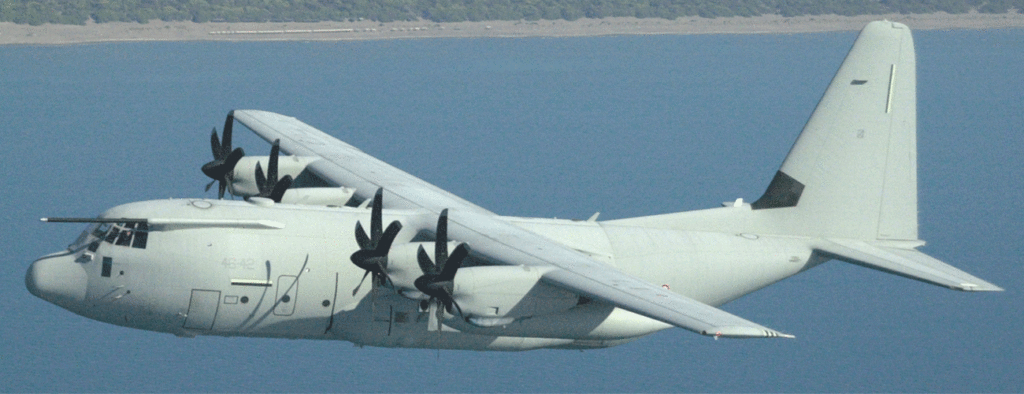
C130J Hercules transport aircraft of the 46th Air Brigade. (Troupe Azzurra)
On both bases, in order to ensure the carrying out of an activity certainly much more intense than normal, rates of personnel and means were redistributed in the various sectors. These redeployments, which were secured in rotation by F104S-ASA and ASAM cells supplied by the 9th, 10th, 18th and 23rd Group, with the employment of the air crew of the 20th Group, after having initially involved Amendola, they were later extended to Gioia del Colle where the 12th Group Tornado ADV FF already operated, they had, as a direct consequence, the uninterrupted activation (H24) of all airport services (GCA-TWR-meteo-refueling), necessary to ensure the sustainability of air operations. Essentially the F104s were mainly used in “Ground Alert” H24, for possible take-offs on alarms (Scramble) and with maximum readiness in 15 ‘, while the Tornado F.3s were used on the CAP areas, positioned to face possible penetrations with Serbia director -Montenegro-Bari, with the possibility of intervening on other routes or replacing aircraft positioned in the CAP over Bosnia or Albania. The Italian air component could rely on the valuable support provided by the Boeing B.707 Tanker – Trasport tanker fleet of the 8th Group of the 14th Pratica di Mare Wing that, equipped with three refueling points capable of delivering, each 1,200 kg per minute, they were compatible with AM-X, Tornado, Mirage 2000, Mirage F1, Mirage IV, Jaguar, RF4C, EF18A, CF18A, AV-8B and Harrier GR-7. Next to the tankers’ fleet, the Air Force also used the Lockheed C130H Hercules and the Alenia G.222 Panda of the 46th Air Brigade which, in addition to carrying out the missions that concerned national and NATO needs, were also used in the “Arcobaleno “Transporting, from September 1998 until July 31, 1999, 8,681 passengers and 600,857 kg of materials, for a total of 700 sorties and 1,171 flying hours.
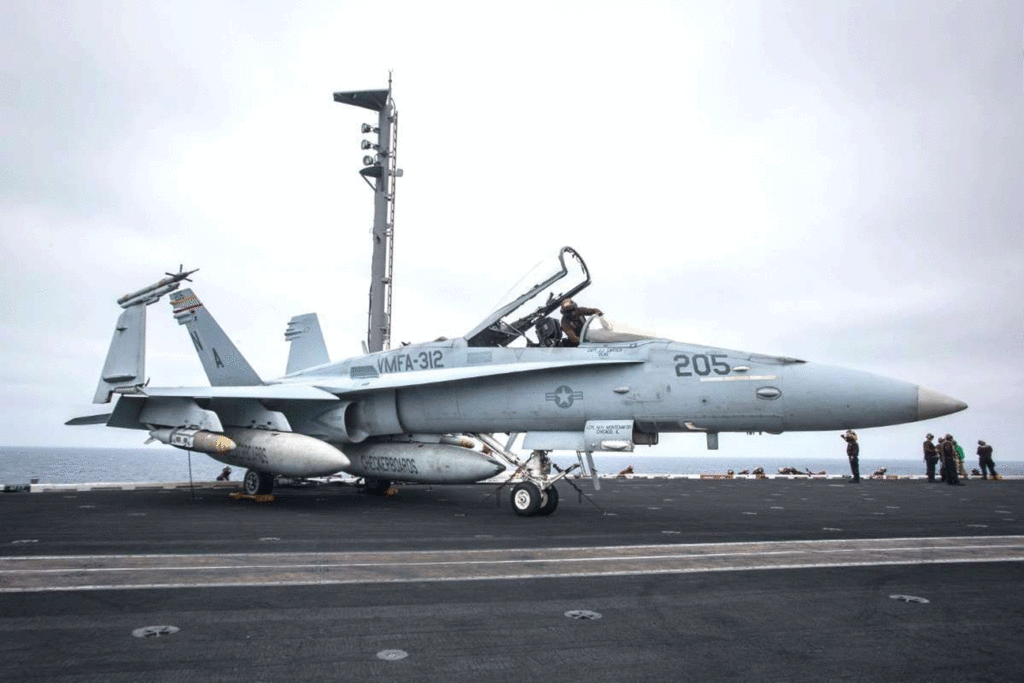
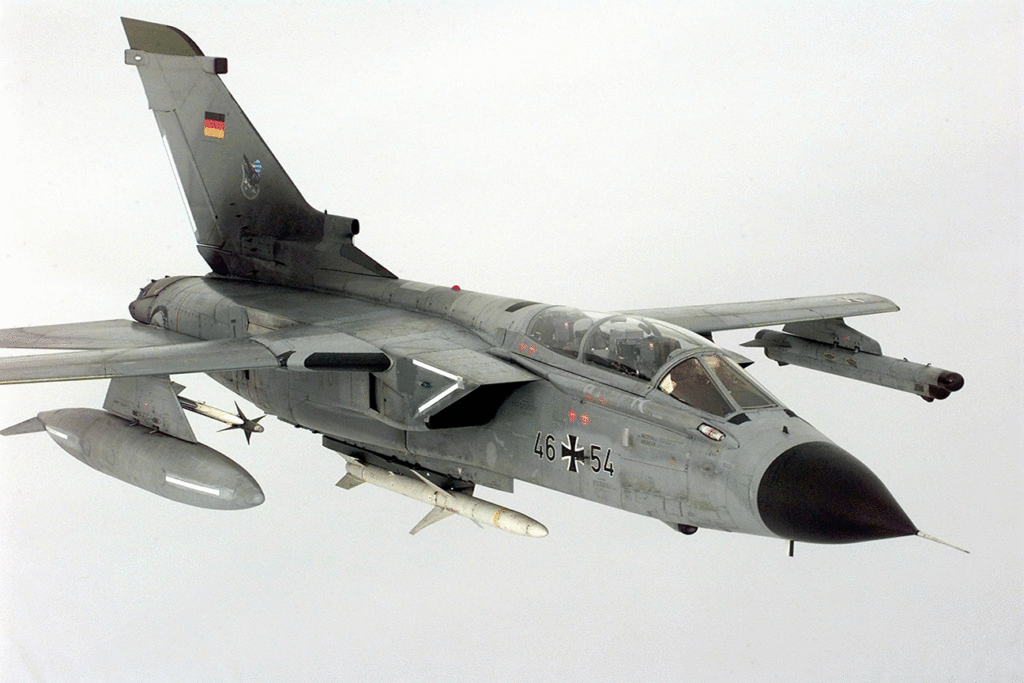
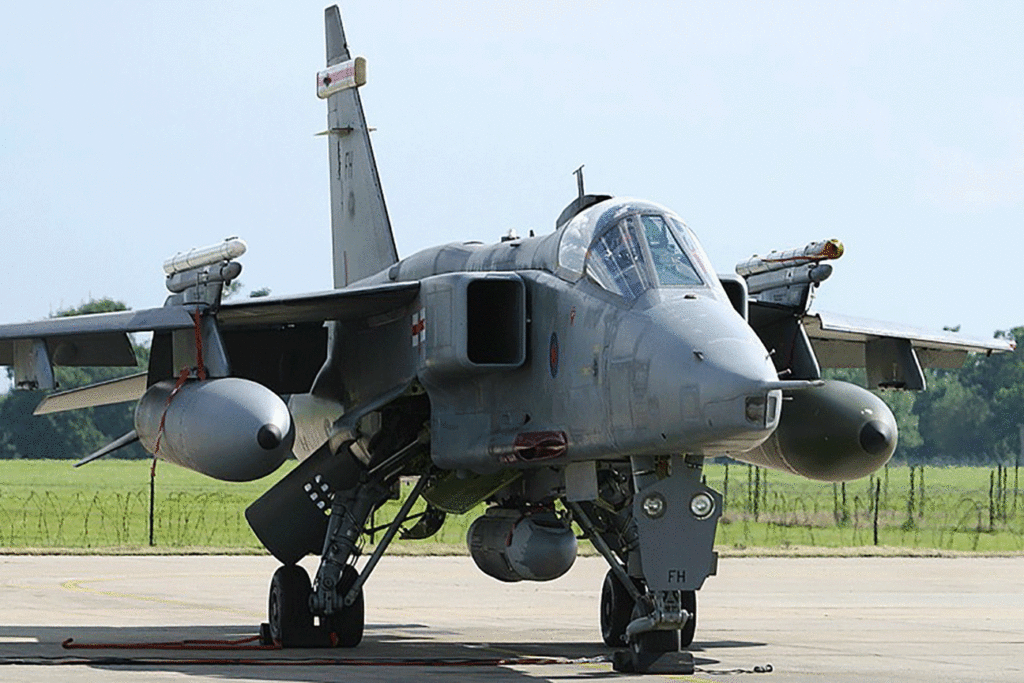
An F / A 18 Hornet of the VMFA 312 on the bridge of the USS Theodore Roosevelt. (US.NAVY)
An ECR Tornado MRCA of the Luftwaffe, photographed during a mission to Kosovo. (Luftwaffe)
A Sepcat Jaguar of the 41 Squadron RAF. Coningsby (Robin Powney)
Placed on their respective airports, the aircraft were ready to be “tasked” according to the operational needs of NATO’s upper controls. On the night of March 24th two ECR / HARM Tornados of the 50th Wing took off from the Piacenza airport to carry out the first war sortie of the Air Force on the territory of the Balkans since the end of the Second World War. Inserted in the ATO (Air Tasking Order), in the role of Suppression of the Enemy Air Defense (SEAD), the two Tornados of the 155th Group of the 50th Wing, together with other Allied aircraft, constituted the first wave of fighter-bombers of Operation Allied Force sent to the area of operations. During the attack the two Tornados were illuminated by the Serbian air defense and framed by the fearsome SA-6 surface-to-air missiles; in those difficult moments the crews, taking advantage of the preparation acquired during years of hard training, managed to avoid the threat and neutralize the Serbian defense systems, guaranteeing the safe entry into the area of operations to the various waves of allied fighter bombers.
That same day, at the airports of Ghedi, Istrana and Gioia del Colle, the headquarters of the attacked wards, the personnel and the aircraft were prepared for the action but, due to the discussions about the nature of their intervention, that some political forces wanted limited to only defensive operations, the CAOC (NATO Combined Air Operations Center of Vicenza), ordered that the crews were kept only in “Ground Alert”, and ready to intervene on call. The strong political debate taking place in the country, amplified by the media, led the NATO Command to the decision not to employ Italian attack forces for a few weeks, with the exception of the 50th Wing engaged in the SEAD missions. Towards the middle of the following April, after doubts, perplexities and controversies, which developed in the parliamentary sphere, the Italian government authorized the Armed Forces, and in particular the Air Force, to participate in the bombing and integrated defense missions of the NATO forces that could finally include, in their operational programs, also the Tornado IDS and the AM-X.
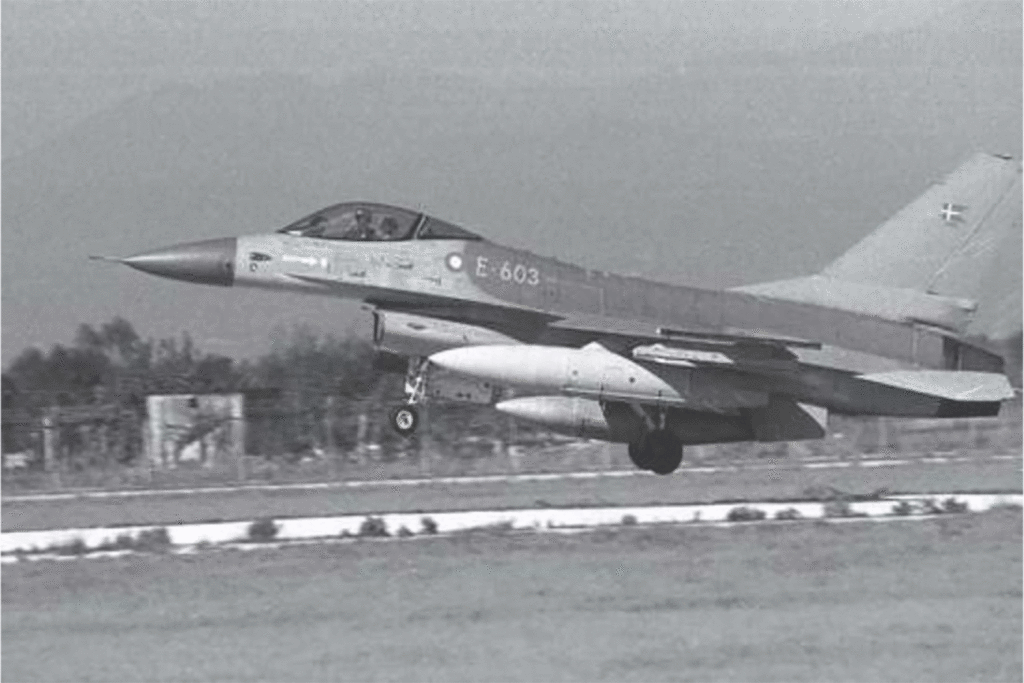
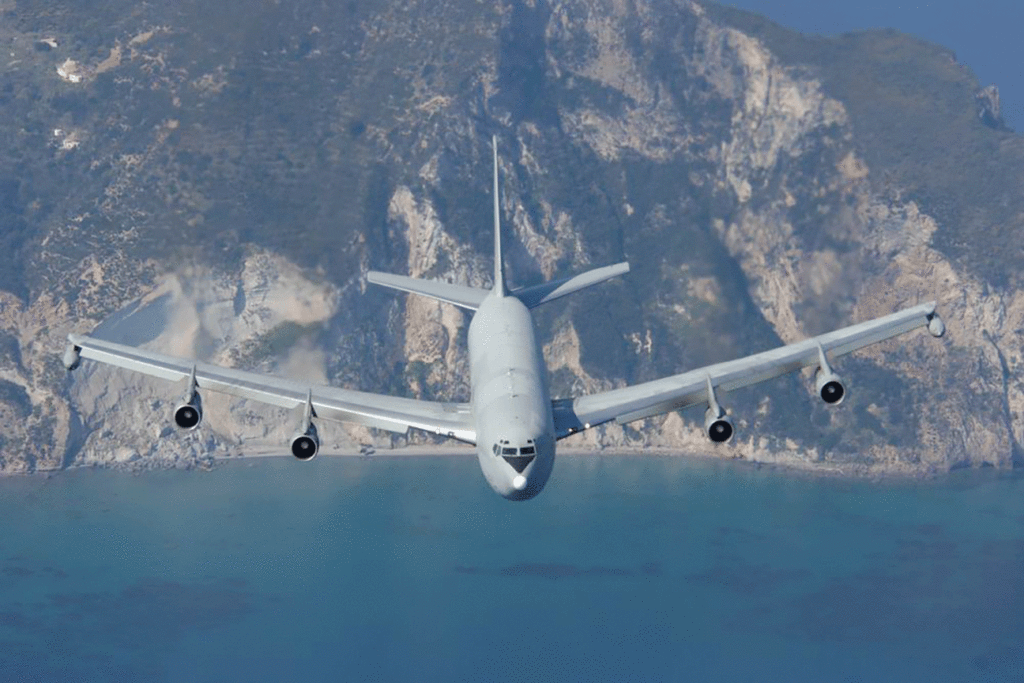
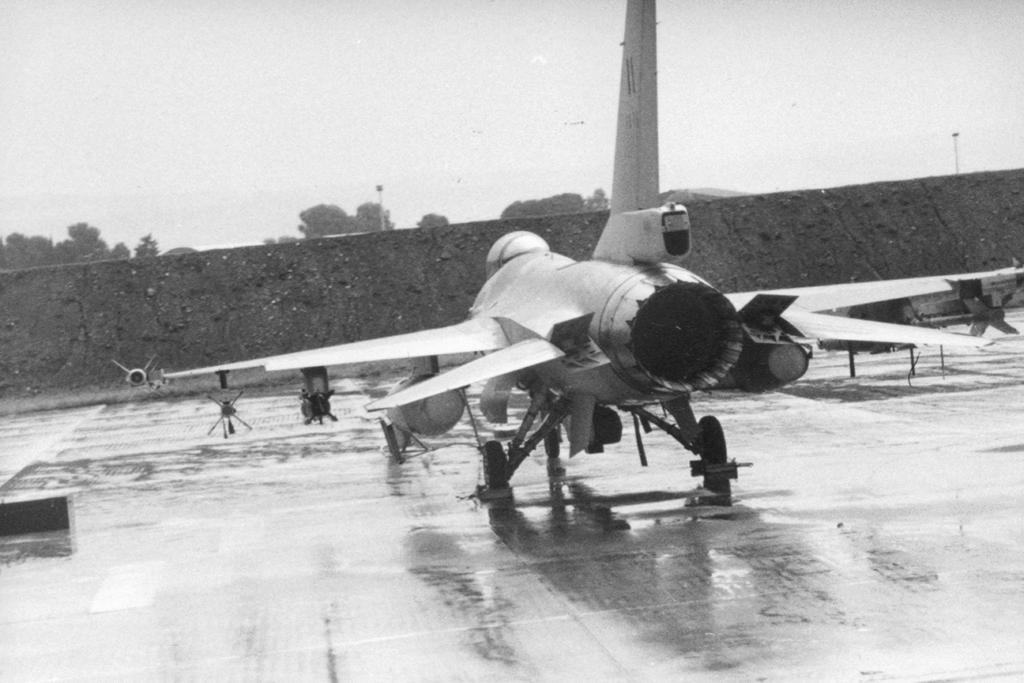
A F16A of the Danish air force photographed on the Grazzanise airport in 1999. (Gigi Iacomino)
A Boeing 707 T / T of the Italian Air Force. (Troupe Azzurra).
A F16A of the Belgian aviation, on the Foggia-Amendola airport. (Gigi Iacomino)
On April 13, four Tornadoes from the 6th Wing took off from Ghedi airport to carry out their bombing mission against some Serbian targets in the territory of Kosovo. The next day was the turn of two AM-Xs from the 51st Wing that took off from Istrana, they carried out the first military mission in absolute of the Ghibli; the action, which marked the baptism of the AM-X fire, took place regularly and the aircraft, after hitting their target, returned regularly to the base. As for the ECR / HARM Tornados engaged in SEAD missions, the Tornado IDS and the AM-X “tasked” for attack missions were also included in “packages” consisting of dozens of aircraft of different types, nationalities and functions that, at successive waves were going to hit military targets in Serbia or Kosovo. Carried out by the bases located in Northern Italy, the missions had an average duration of 4-6 hours, for a stay in the area of operations of a few tens of minutes, and required at least two refueling in flight. These were complex missions that, conducted in close coordination and integration by aircraft of the Allied nations, were controlled on the ground by the CAOC and in flight by the Boeing E-3 A Sentry (AWACS) aircraft of the NATO Airborne Early Warning Force which, as centers flying controls, monitored the air situation.
MISSION PLANNING
The planning of each of the missions began almost two days in advance of its execution, since each phase of the flight of each participating aircraft had to be coordinated and deconflected with or from that of the others present in the area such as the AWACS, tanker aircraft, SEAD , A-FAC (for guidance on the objective of fighter-bombers), and hunting bombers of different types. Although for the majority of Italian pilots and crews it was the first real war use (some had already taken part in the Gulf War with the IDS Tornados), the missions were faced without uncertainties thanks to the precious experience gained in the complex exercises carried out in Europe and the United States (Red Flag, Green Flag and Maple Flag), and participation in the operations in place since 1995 for the stabilization of peace in Bosnia and Herzegovina.
In the first phase of the operations the Italian aircraft used the classic free-fall armament, but very soon the IDS Tornadoes were “tasked” for missions with laser-guided armament while the AM-Xs, in addition to unhooking infrared guided Opher bombs, were enabled to use laser guided bombs. From the first missions carried out the Italian pilots and crews obtained positive results showing, to the different detractors, to be up to the best NATO colleagues. Also the aircraft used proved to be up to the situation and the tasks assigned to them; this was especially true for the AM-X which proved to have a reliability and an effectiveness almost exceeding expectations.
